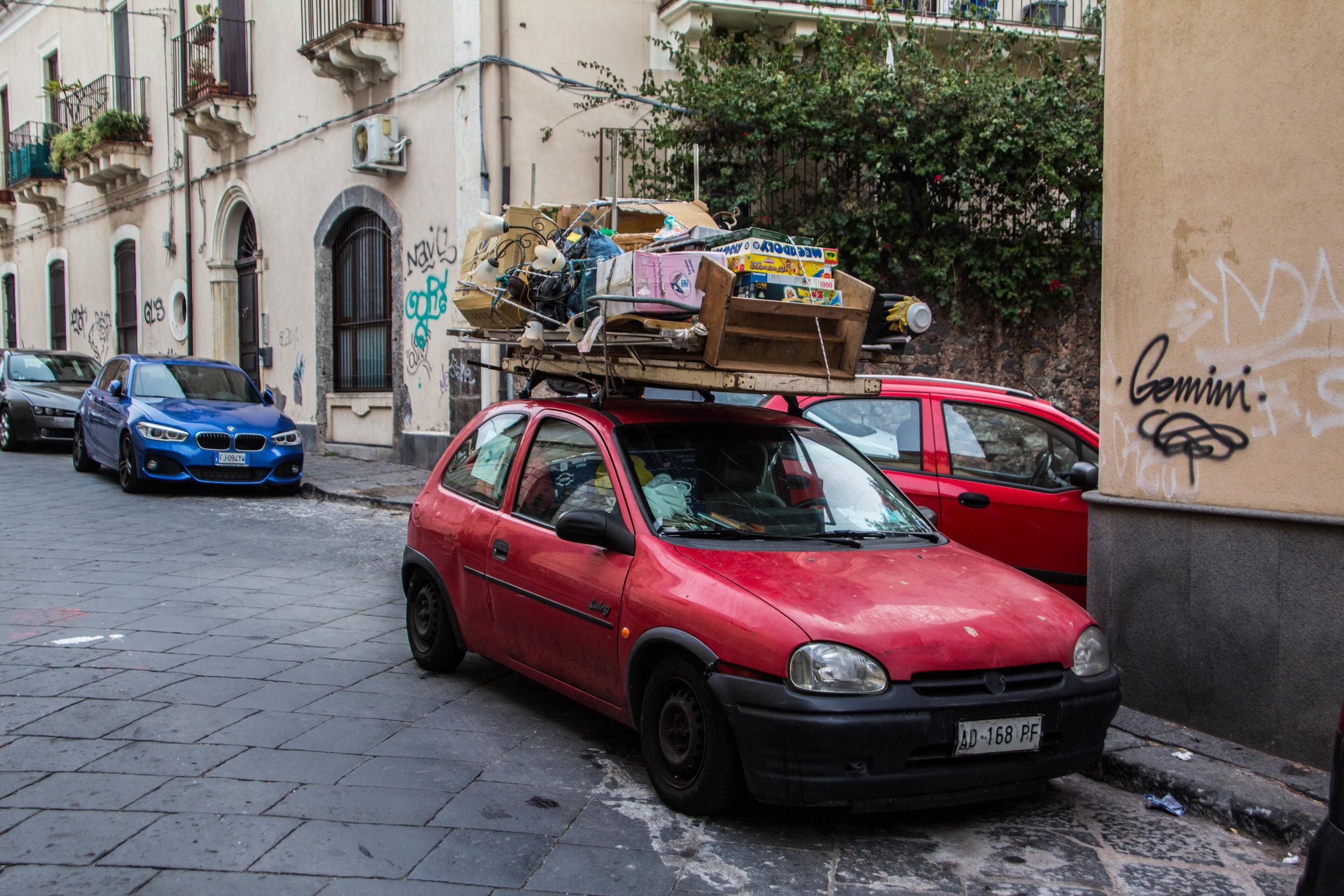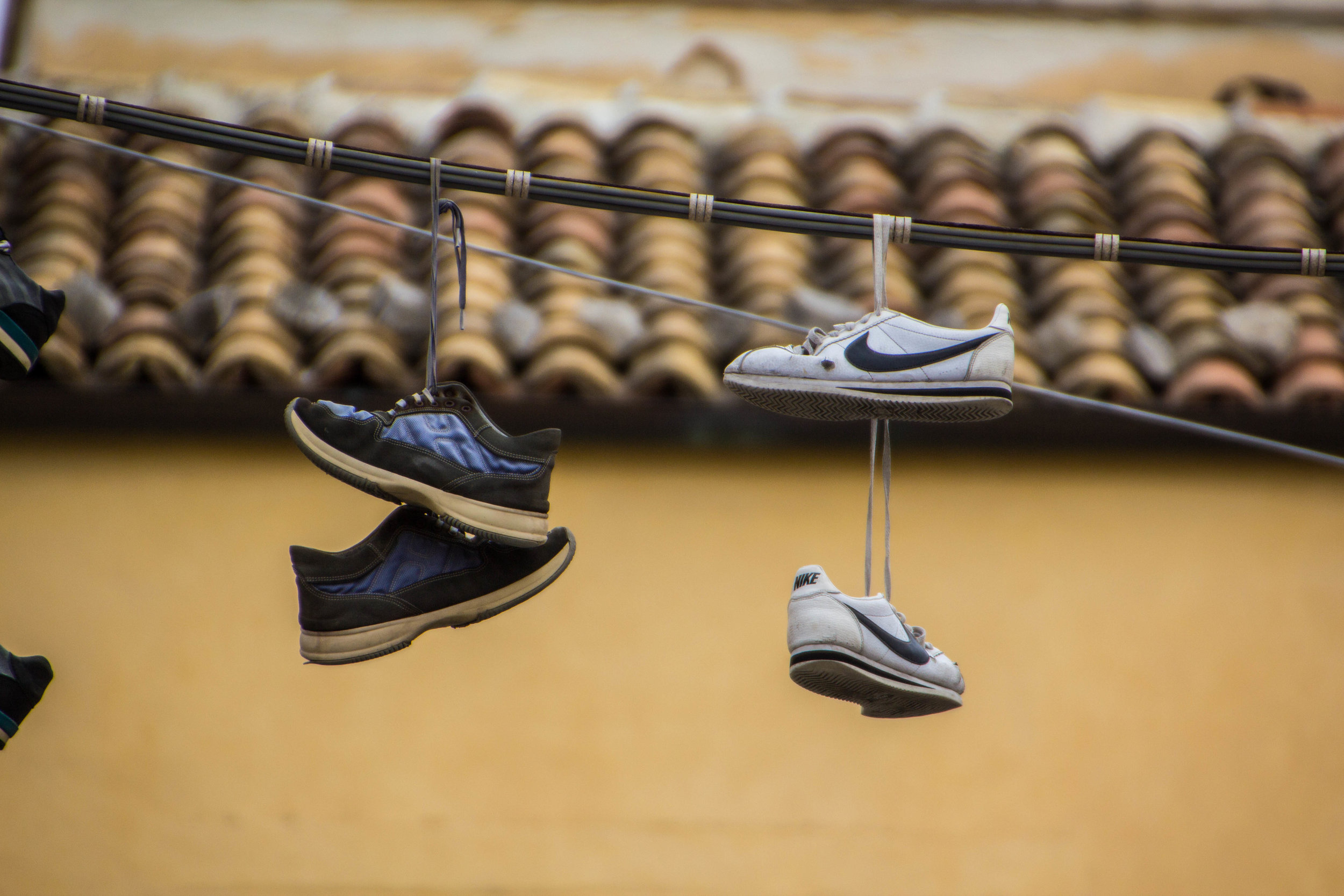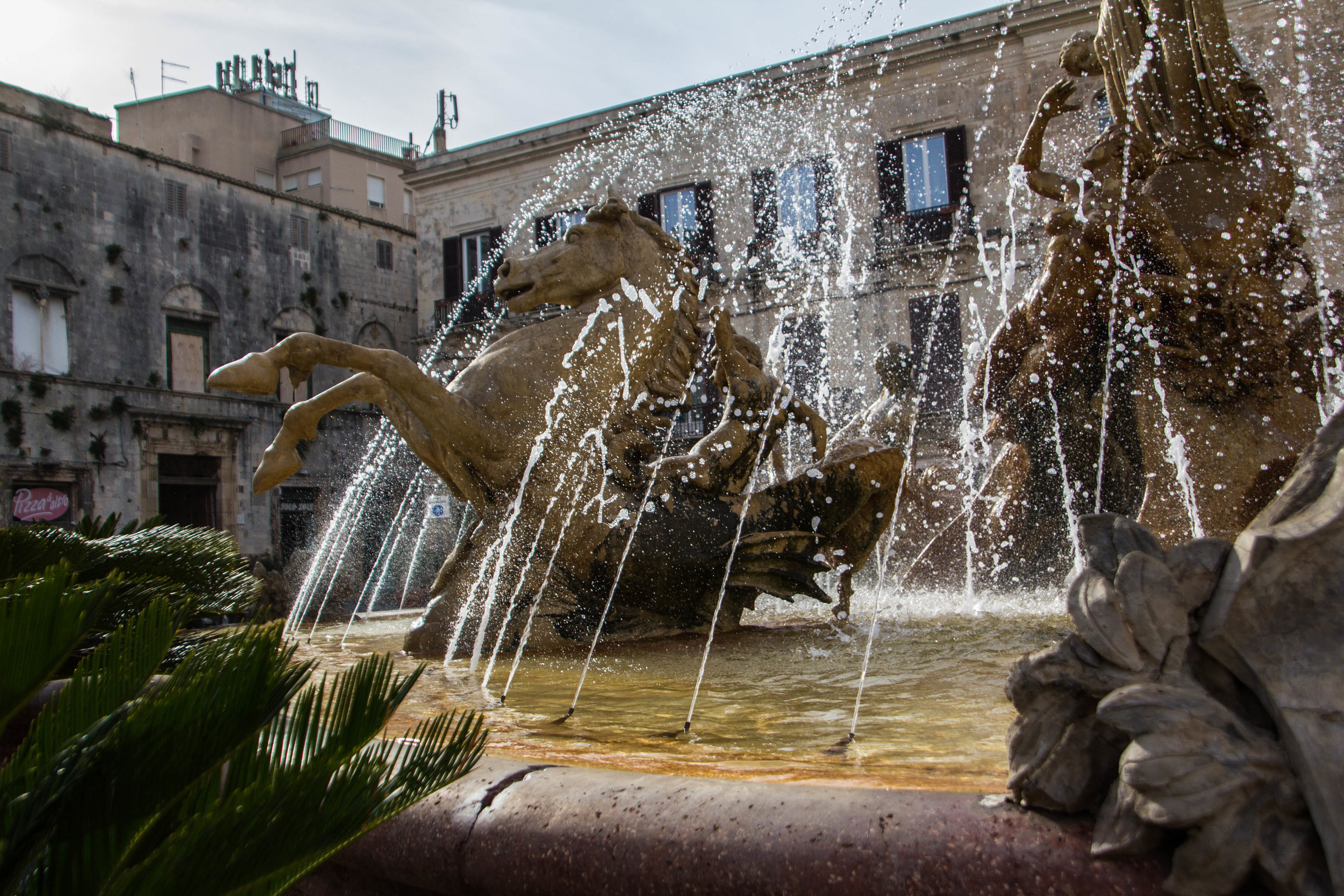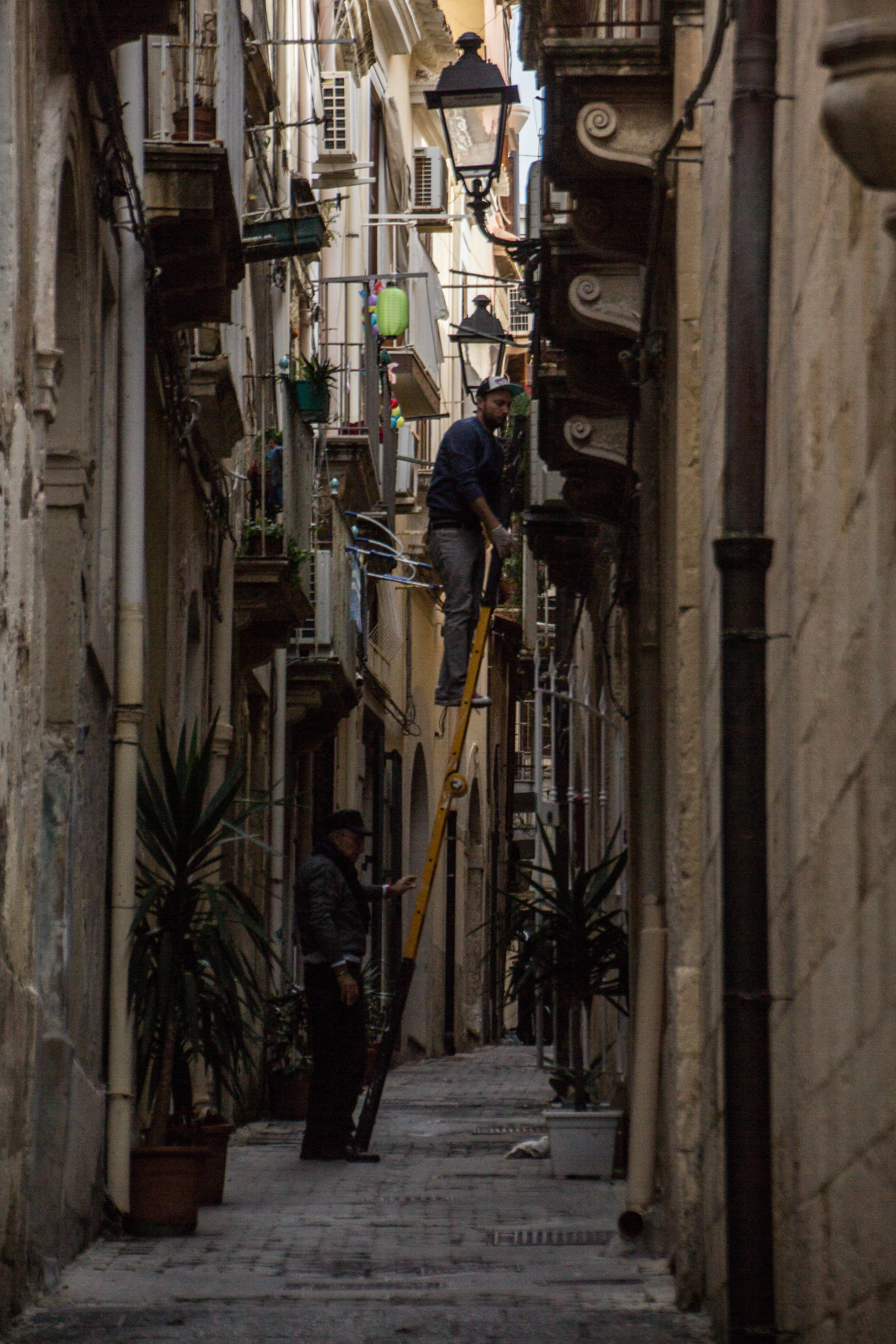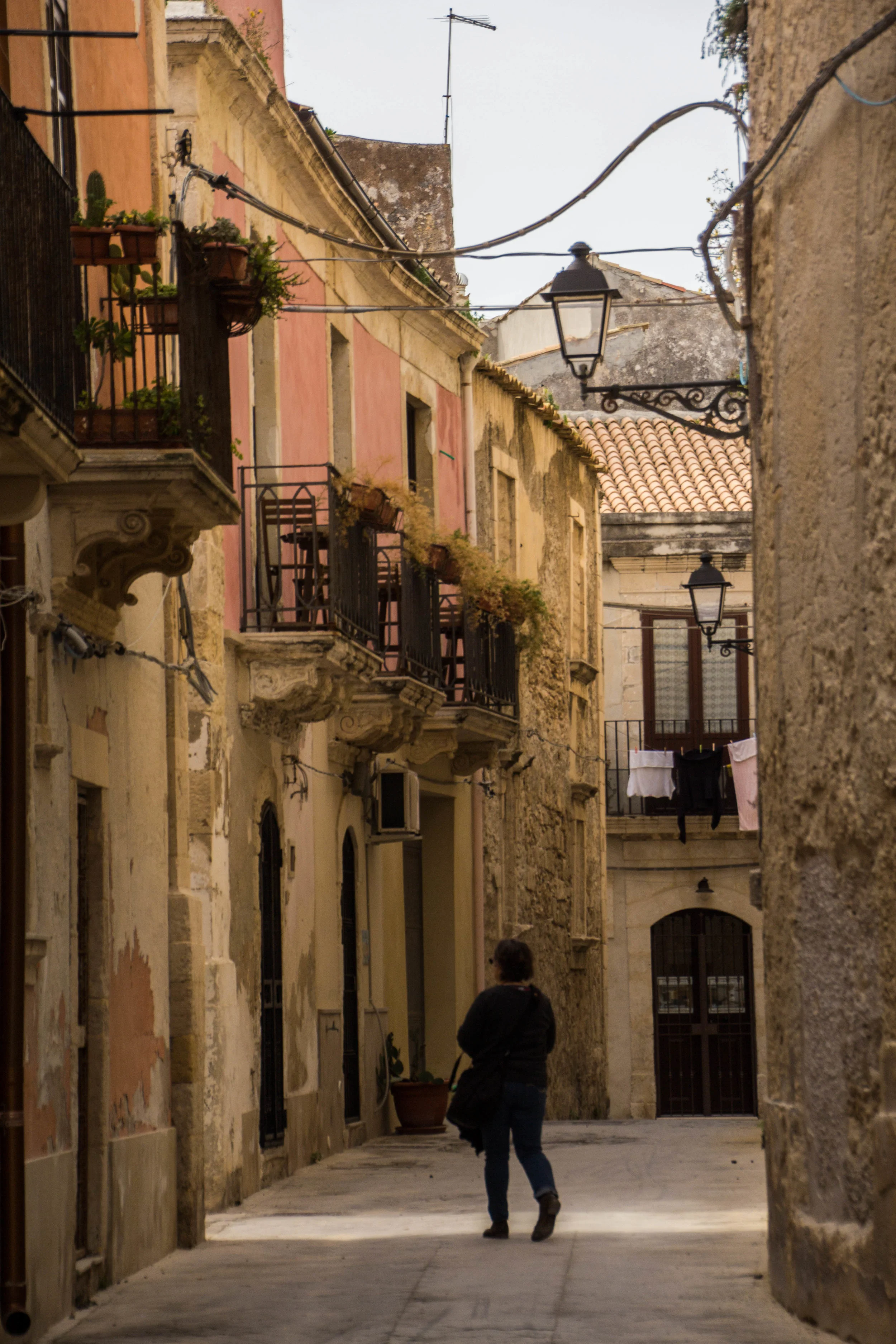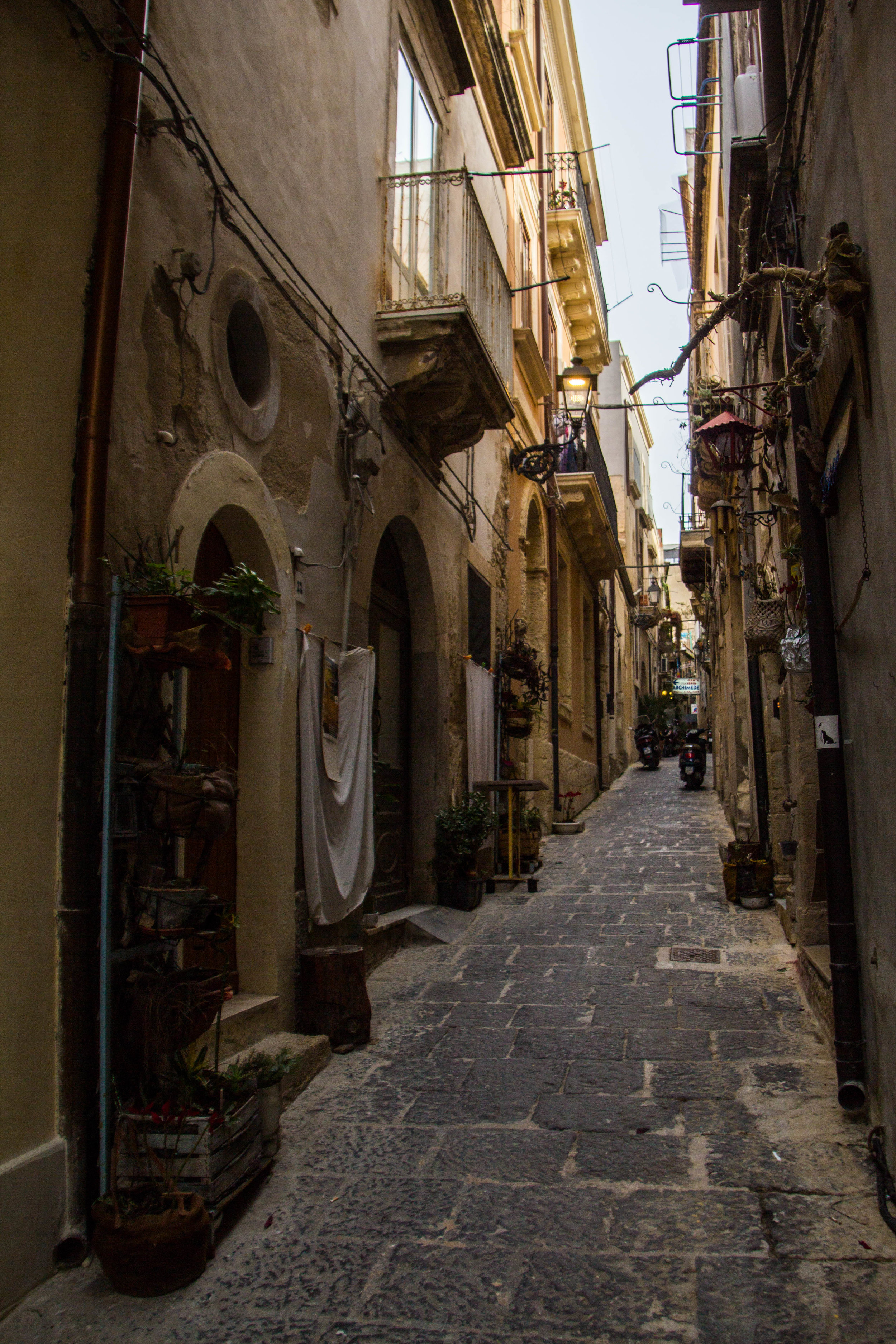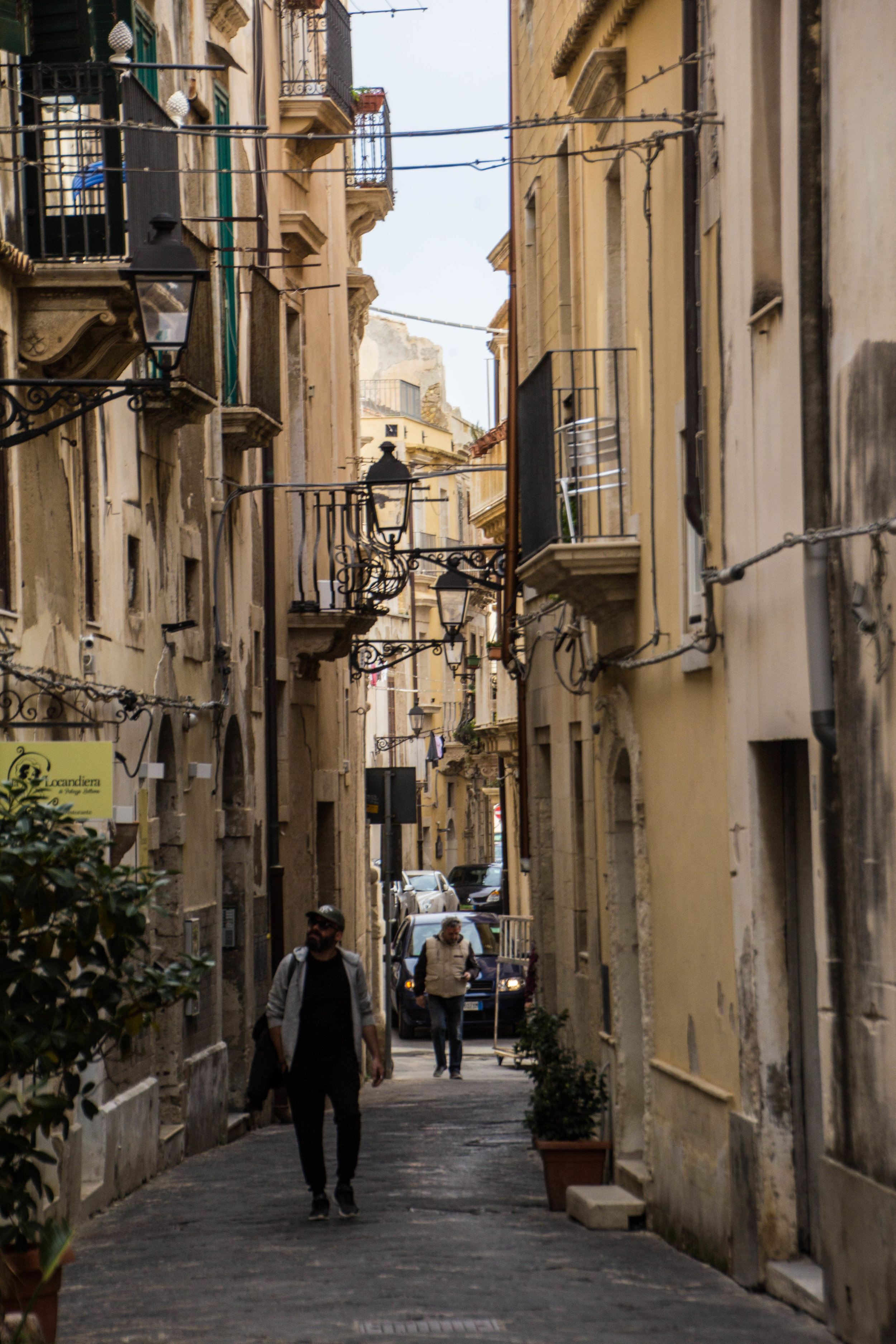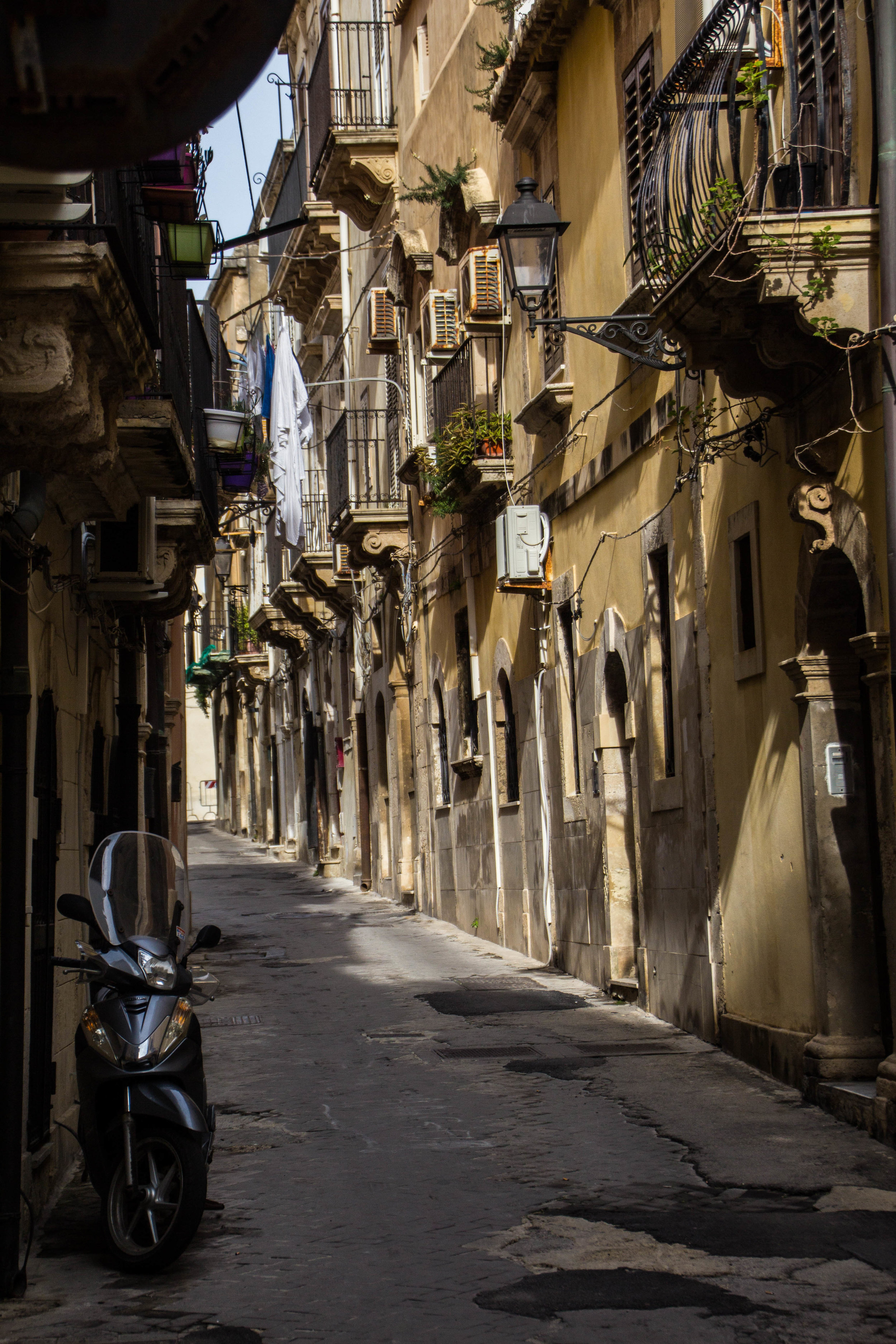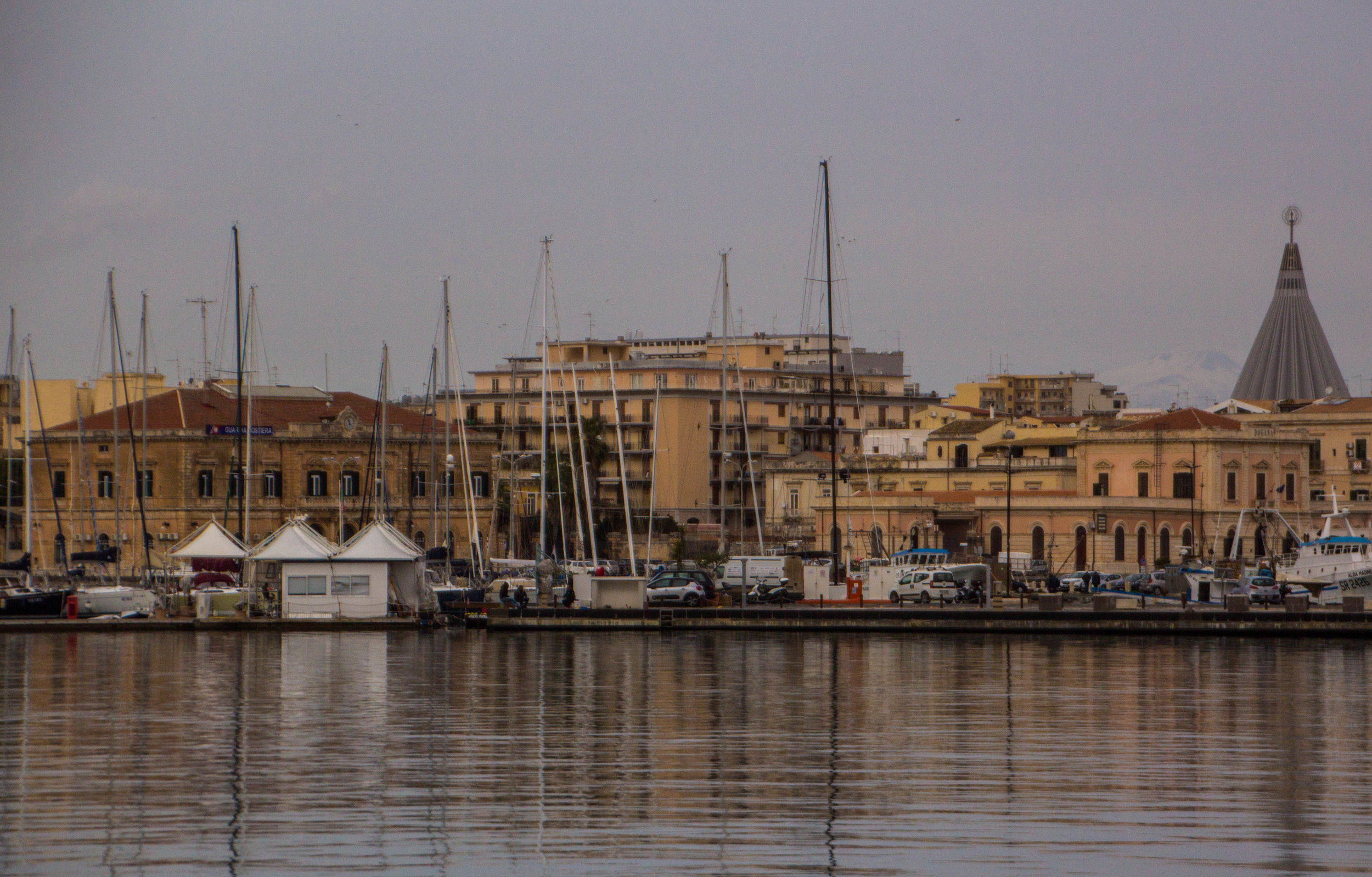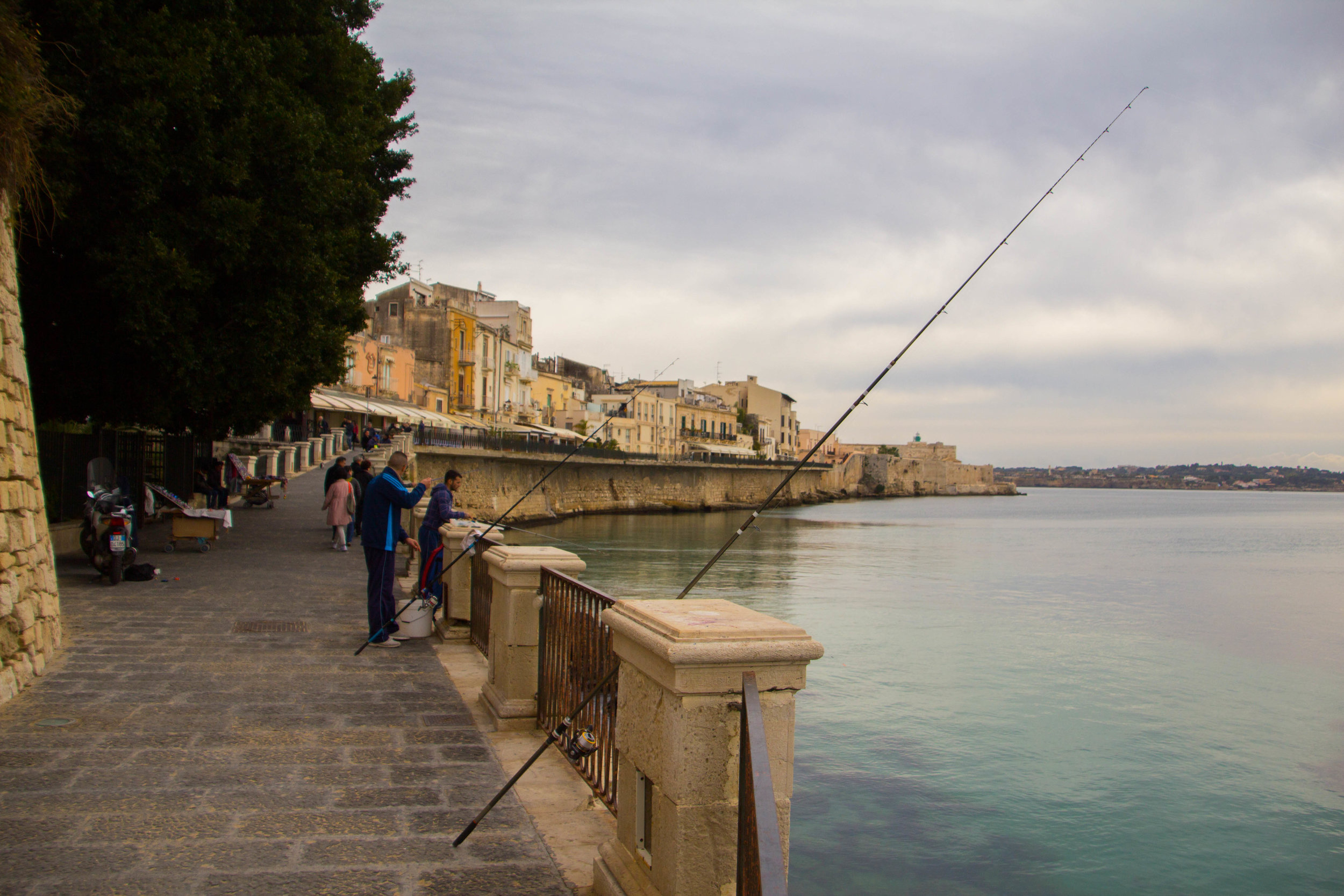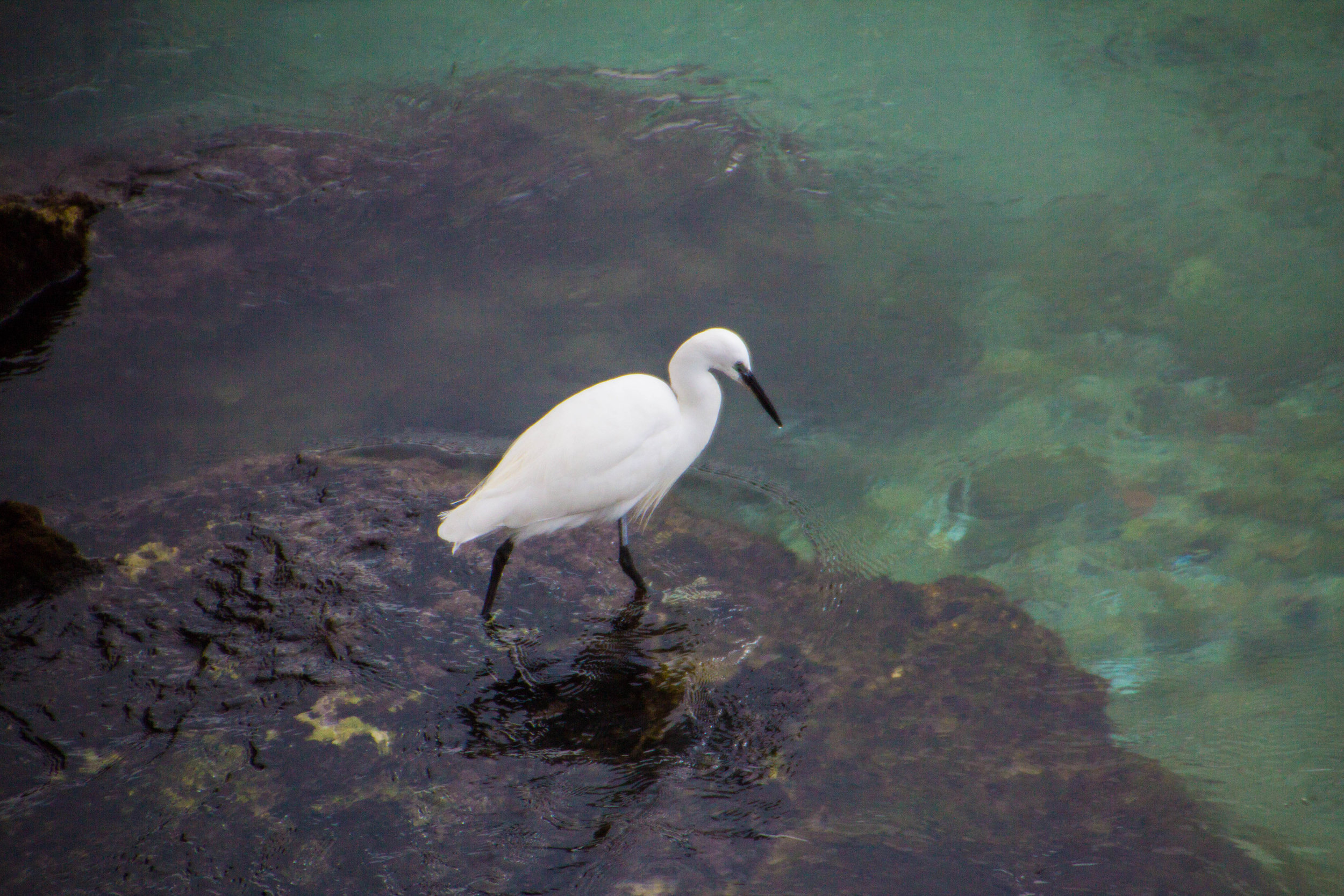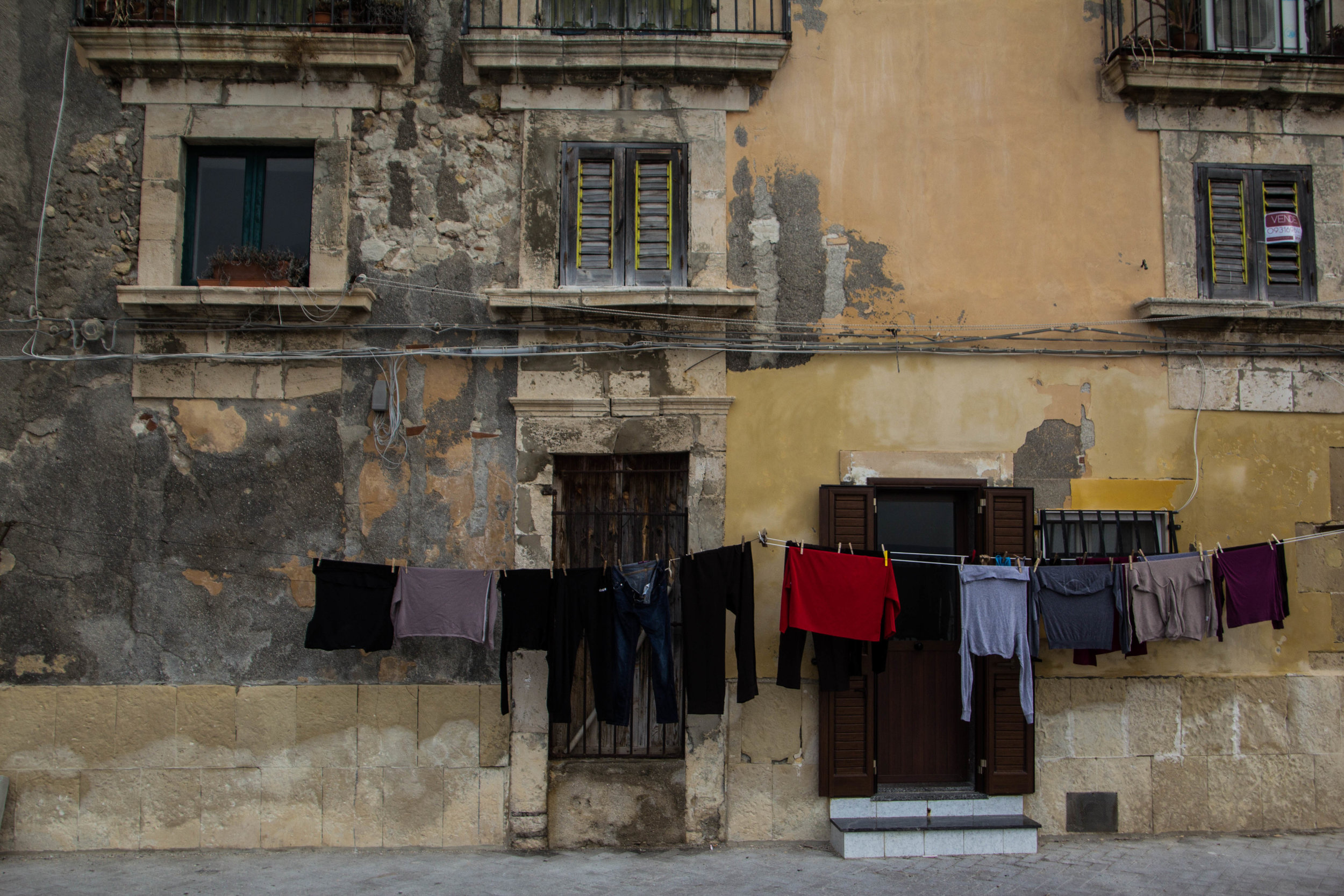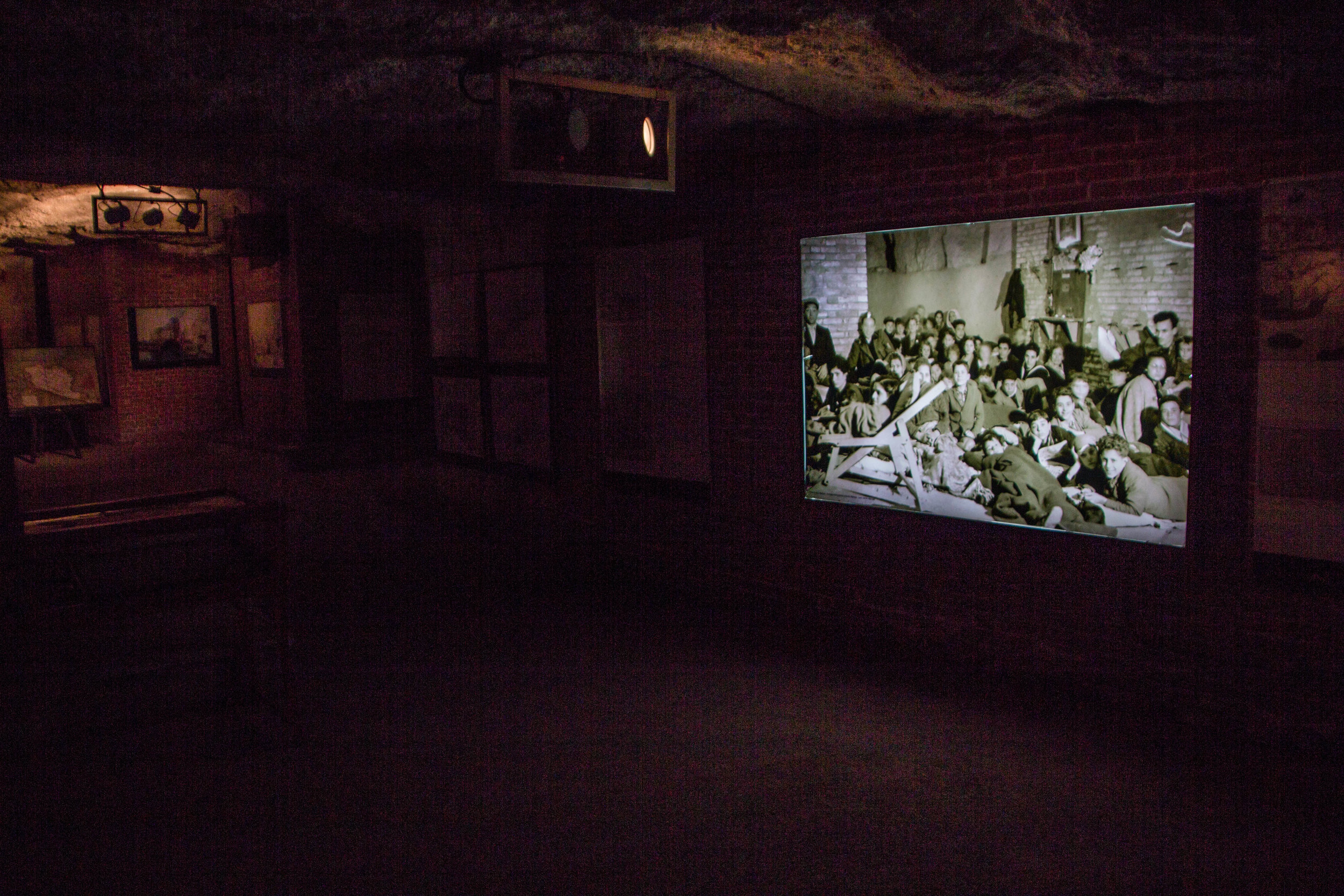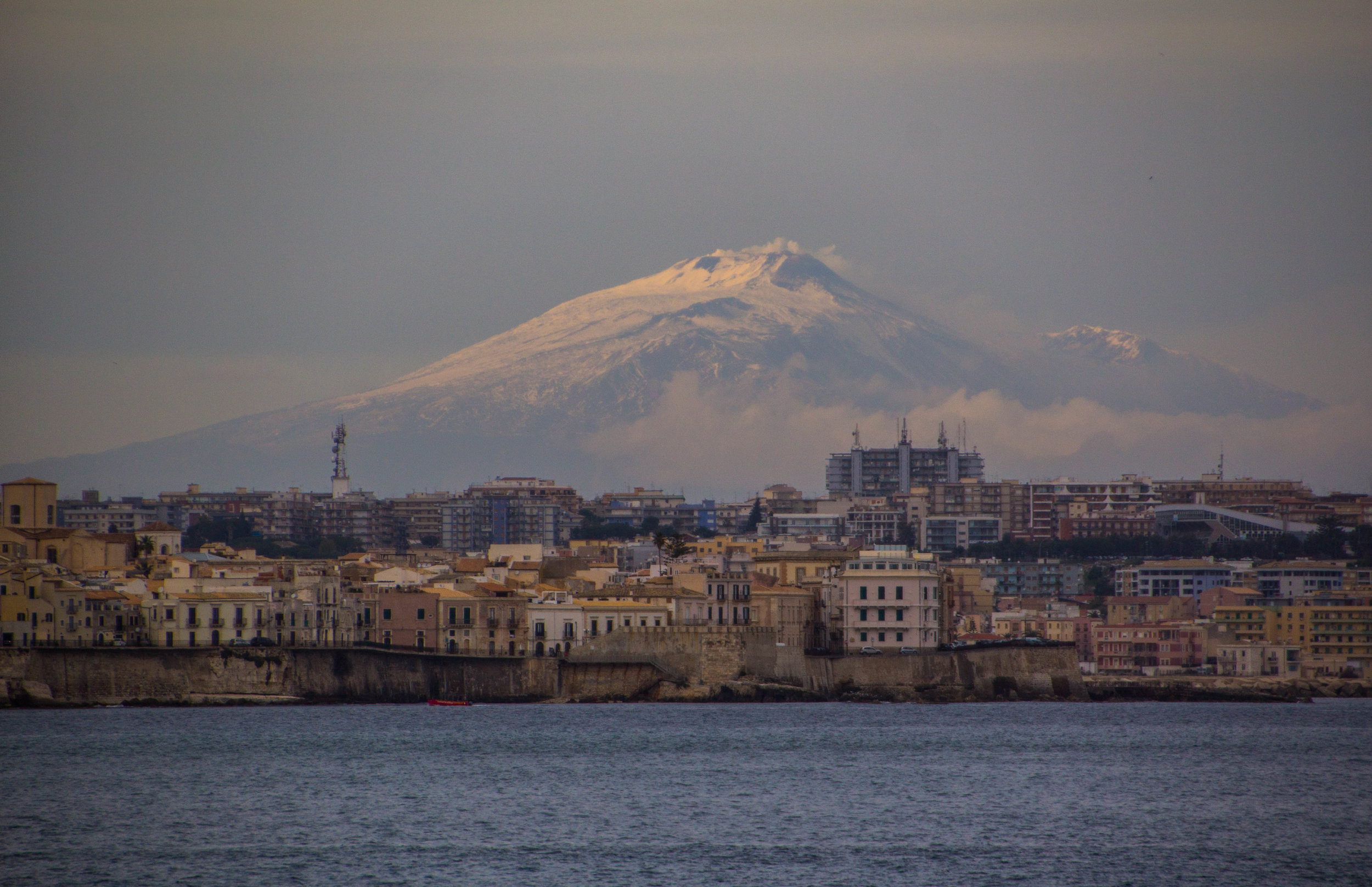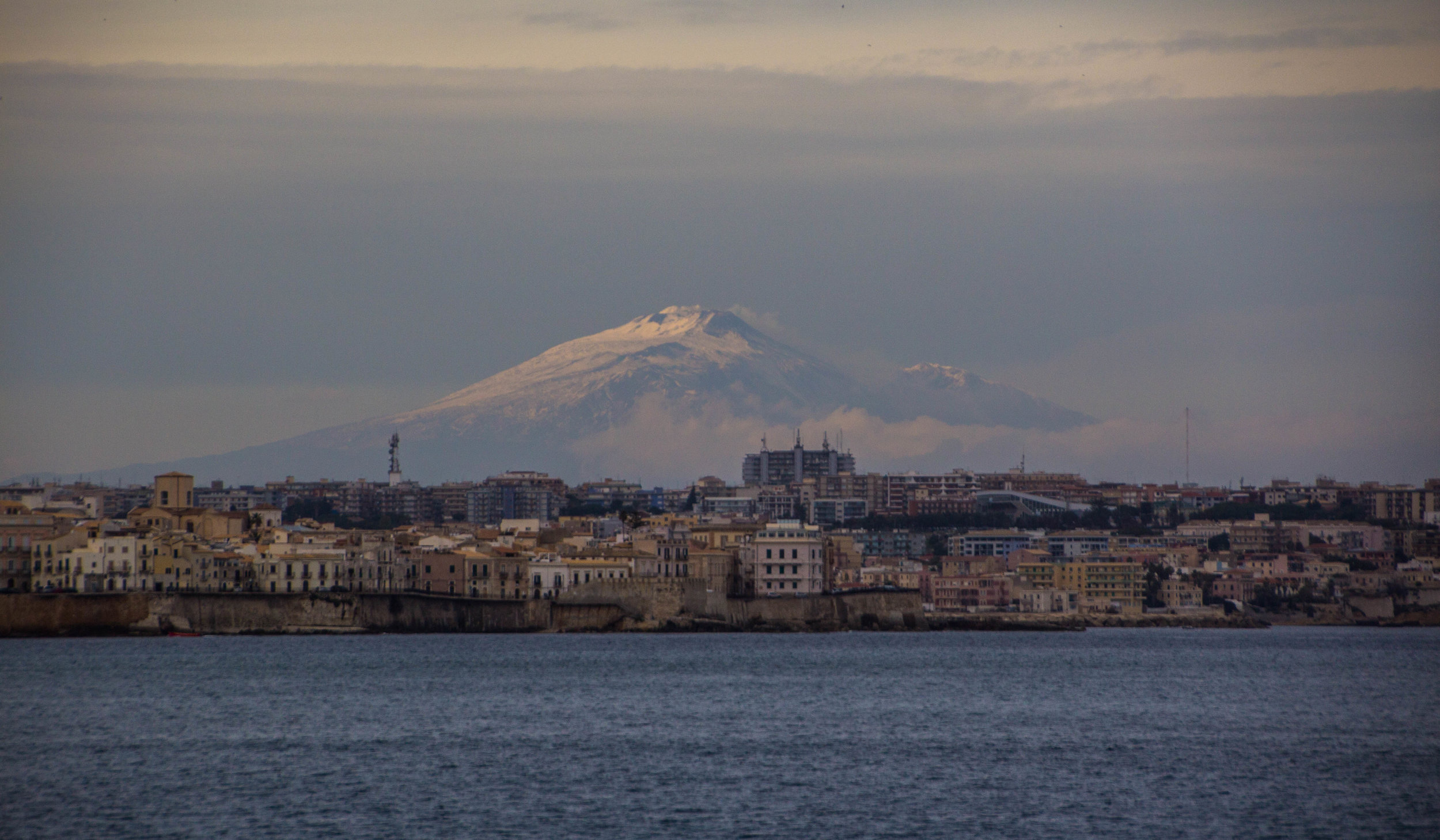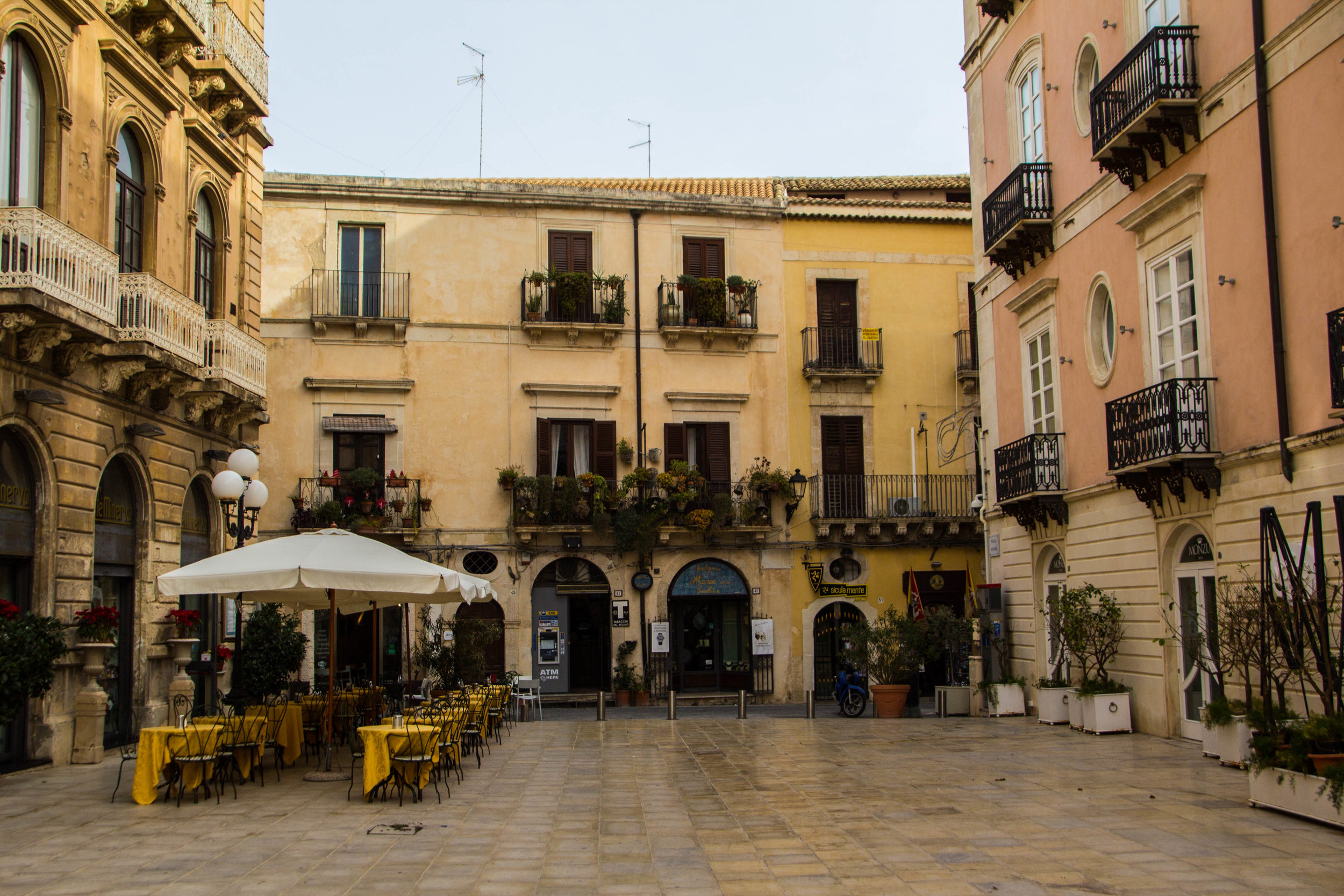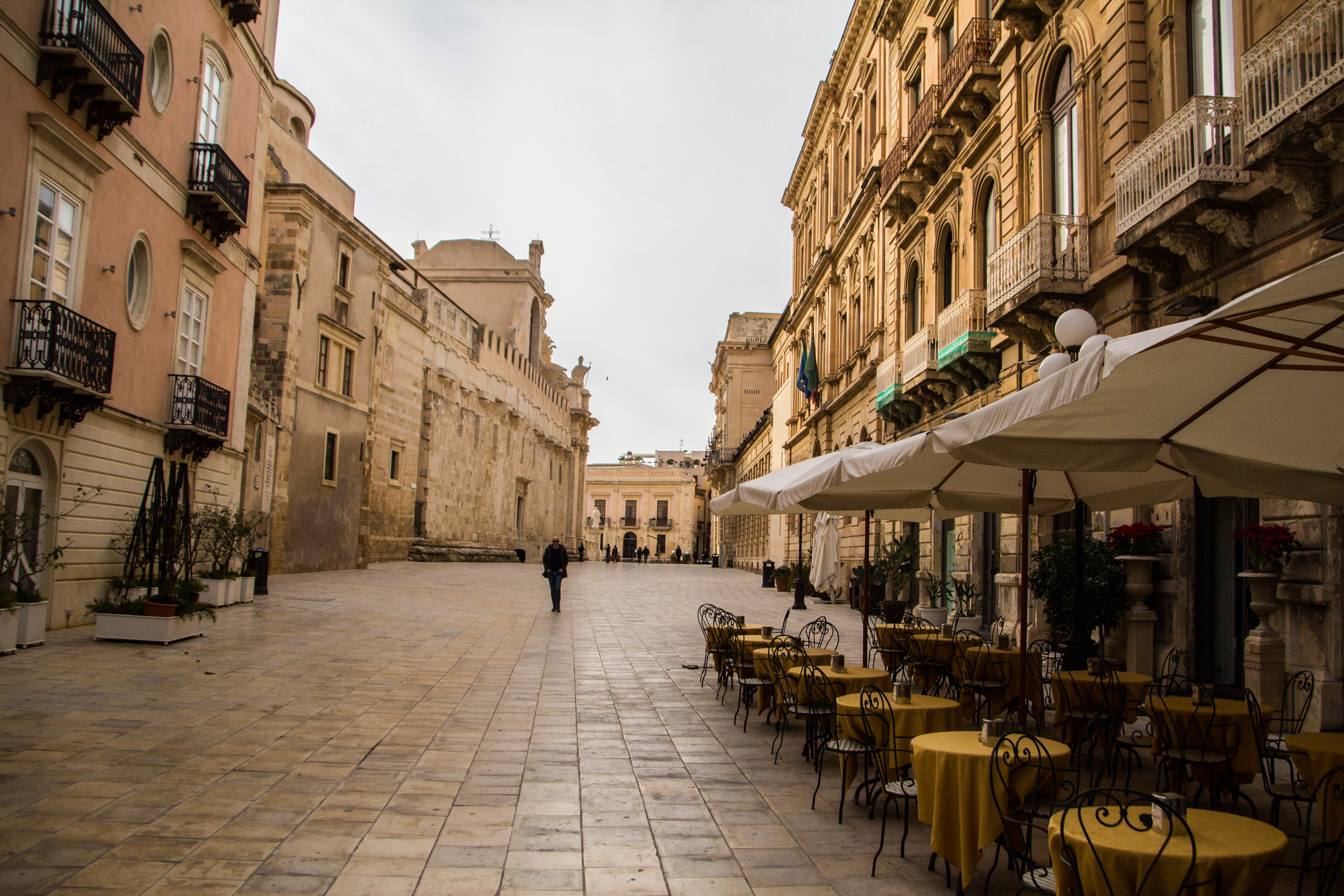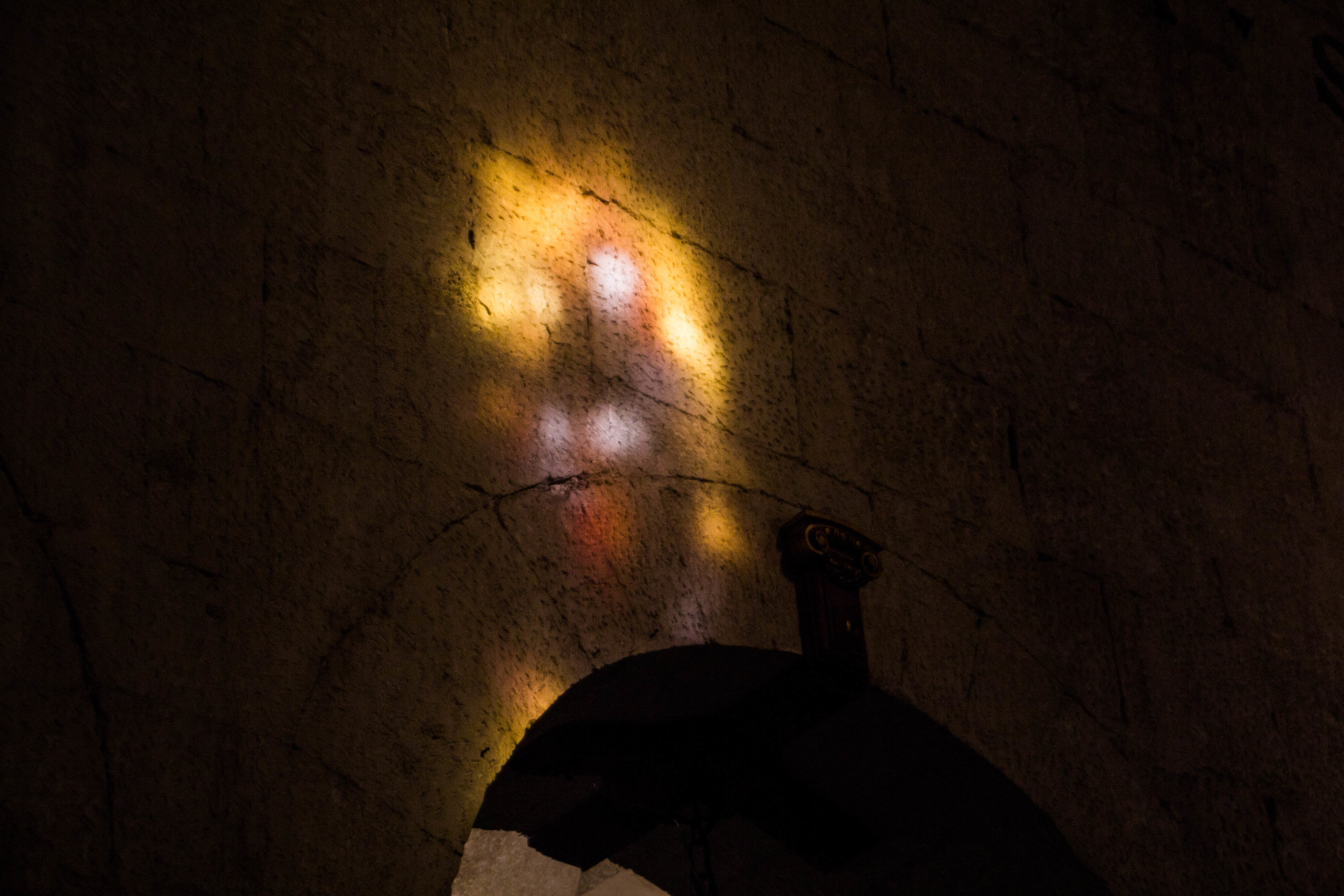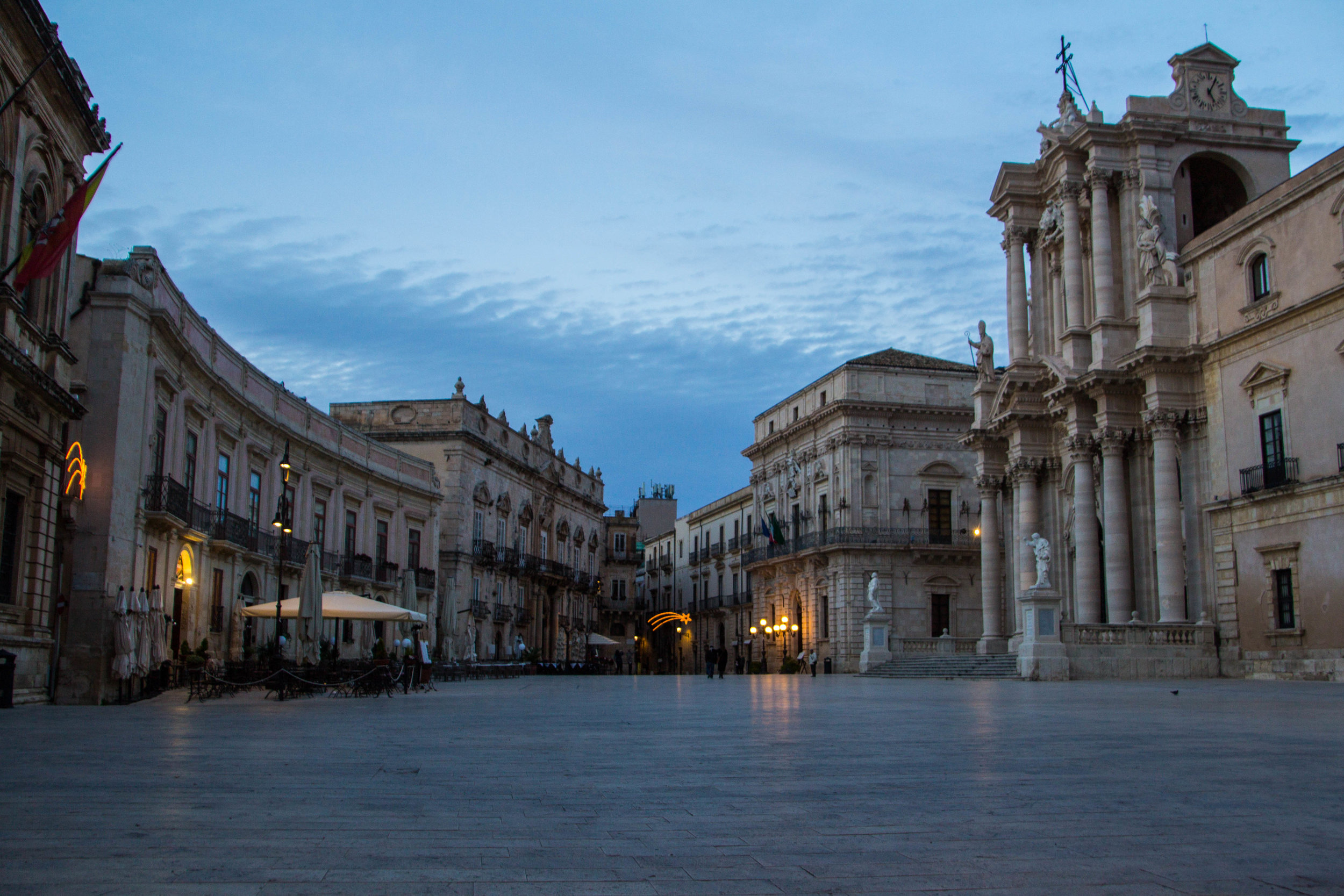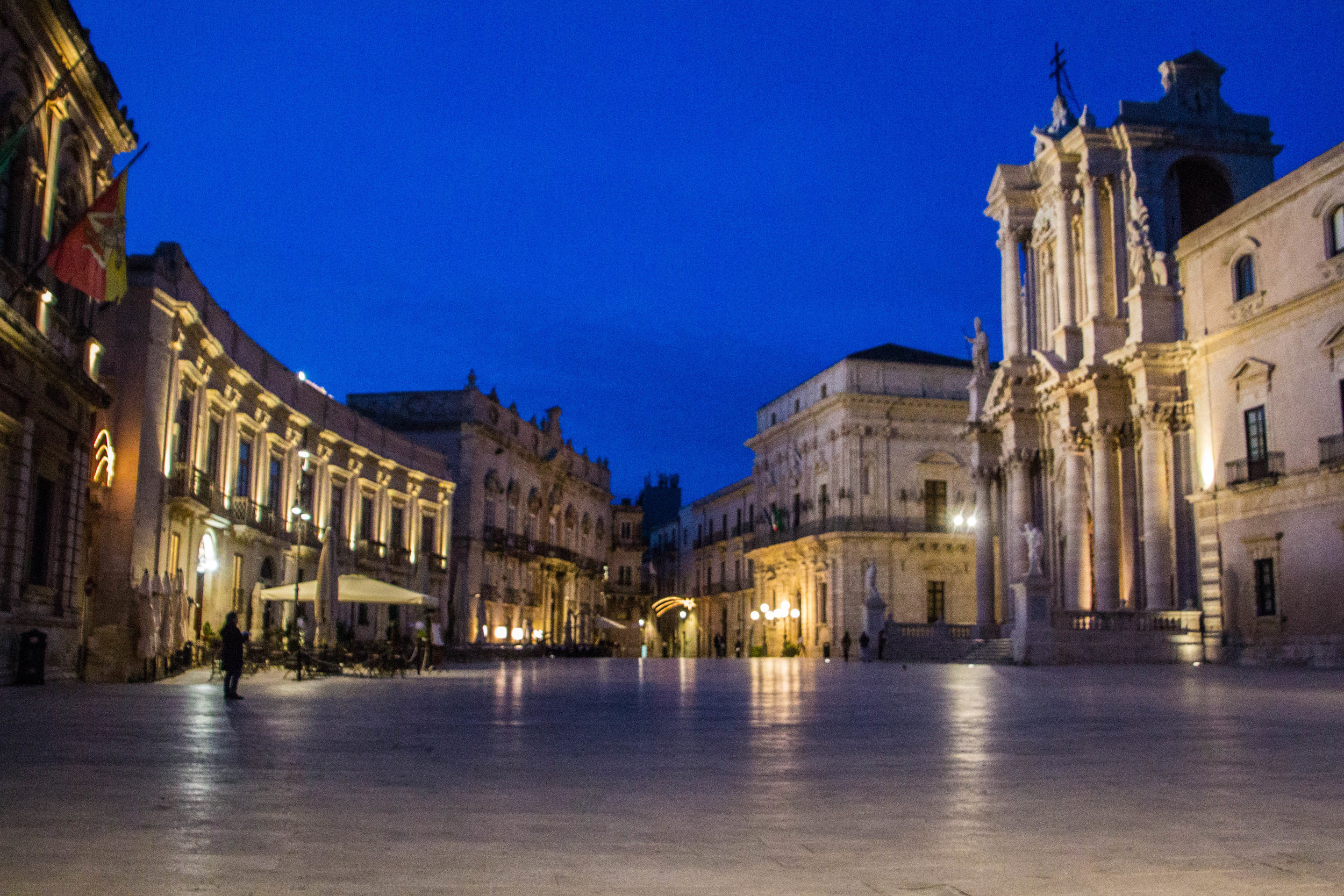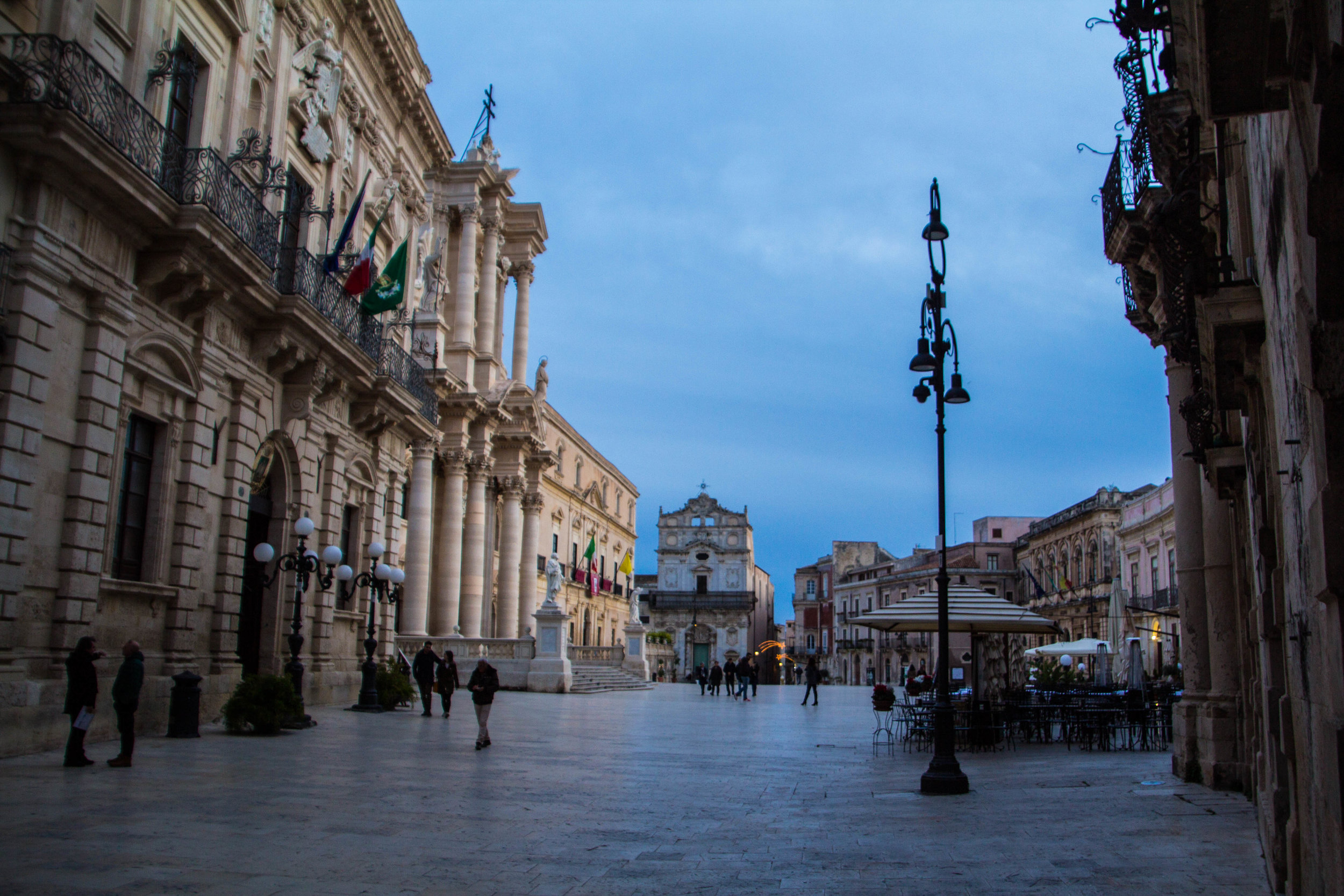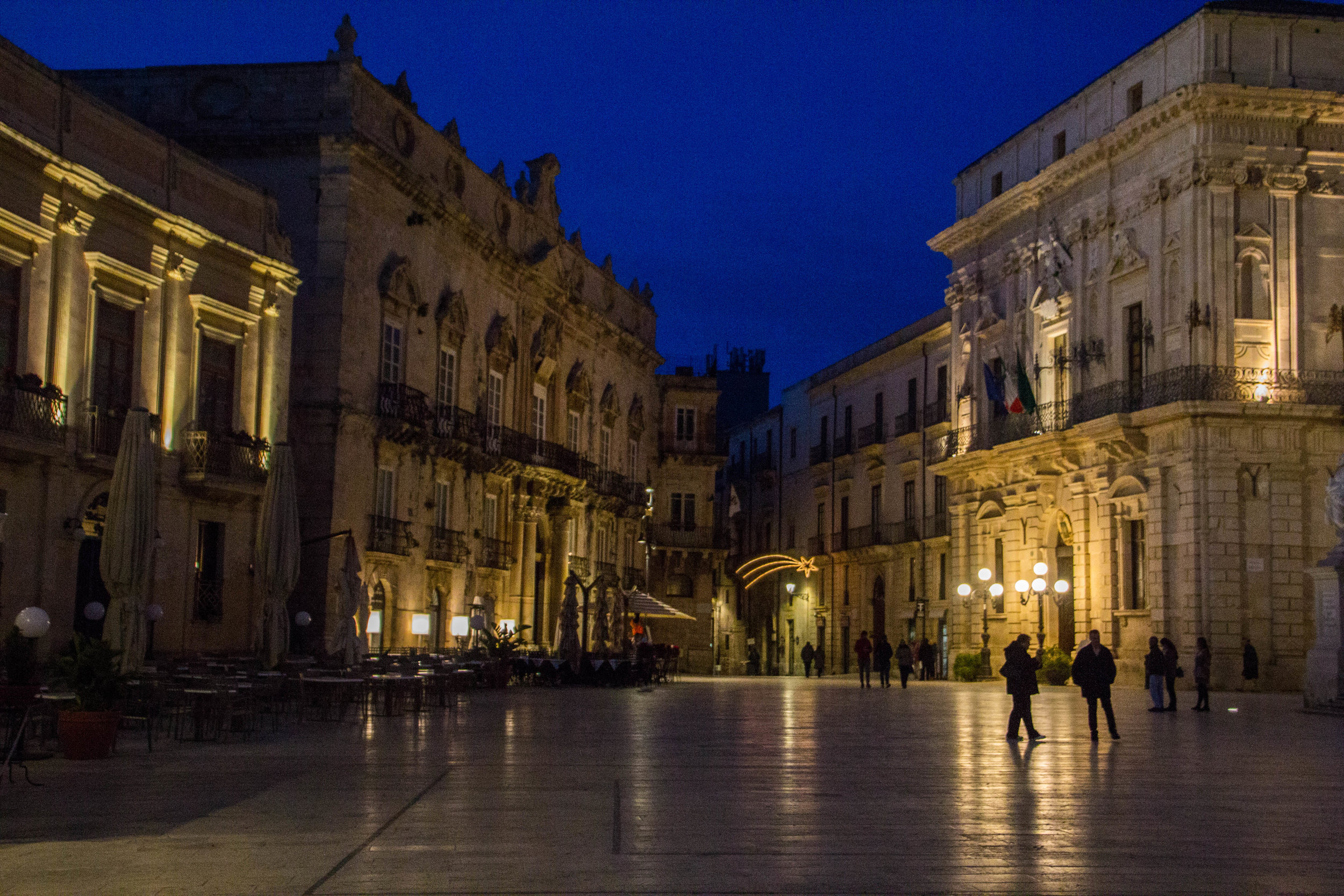All About Syracuse, Sicily
Just 2 hours south from Catania, down the eastern coast of Sicily, sits the city of Siracusa (a.k.a. Syracuse). You may recognize this name from history books about the very distant past. Syracuse makes appearances in tales and legends that stemmed from a great many famous Empires over the course of Mediterranean history, most notably the Greeks, Romans, and Byzantines.
Of these, it's most notable for its role in Greek Mythology. It was founded in 734 B.C.E. by Ancient Greeks from Corinth and Tenea. It soon became a powerful city-state, allied with Sparta and Corinth, exerting great influence over the region. That's Corinth, as in the Book of Corinthians, from the Bible. And while we're on the subject, did you know that Syracuse itself was actually mentioned in the Bible? Acts 28:12. Look it up. And here's one more fun fact for you: in the year 234 B.C.E., Archimedes—the Greek mathematician, engineer, scientist, inventor, and astronomer—was born here!
Syracuse was described by early Roman officials as "the greatest Greek city and the most beautiful of them all." Apparently it was as big and powerful as even Athens in its hey-day. Ultimately Palermo would eclipse Syracuse as the center of power and commerce in Sicily, but for nearly its first thousand years, Syracuse was the heart of everything Sicilian. Today it is a relatively small city, but it retains its history and its beauty all the same. The population is around 122,000, making it the 4th largest city in Sicily, behind Palermo, Catania, and Messina. However, we're not going to be spending much time in the greater Syracuse area in this article. We're going to be spending most of our time in Ortygia.
All About Ortygia, Sicily
Want to know what ancient Syracuse looked like? Then take a look at Ortygia. This is the center of the "old city," in a much more concrete way than you might expect. You see, most cities in Europe have some sort of "old city." This by itself is not unique. The "old city" is usually right in the middle of the rest of the greater cityscape, and that makes it difficult to tell where the "old" part of the city ends and the rest of the city begins. But Ortygia isn't just on an island; it IS an island.
Supported by sheer rock and brick walls rising abruptly out of the south Mediterranean sea, Ortygia is a natural fortress. It makes many appearances in early Greek lore, most notably as the fabled birthplace of the Greek god Artemis. However, as time progressed, Syracuse grew into a substantial mainland city in its own rite. Still, Ortygia has stood for more than 2,000 years, just as it always was. It is still very much a functioning part of the city of Syracuse, with businesses and full-time residents who call it home.
Today we're going to do our best to explore every little nook and cranny of this place.
Here's Ortygia on the map, so you can get an idea of exactly what the geography is like...
We set out from Catania early in the morning to make the trek down to Syracuse. Prior to arriving here, I had read a great many blogs that complained about how difficult and dangerous it is to drive across Sicily, but honestly, I have NO idea what they are talking about. The roads were smooth and easy to navigate, and we had made it to our destination in no time. I learned to drive abroad in sort of a trial-by-fire situation, driving a motorcycle around Hanoi, Vietnam, so I can get judge-y when people complain about driving. However, I decided to suspend judgement until the end of the trip. We had a lot of miles ahead of us before the trip was over, mostly in what I was sure would be much rougher terrain.
Out the window of the car, rolling green hills sped by us. In the summer these hills take on much more of a brownish tint, but in January, Sicily was at its most lush. Between ridges we would catch glimpses of groves of lemon and orange trees, adjacent to beautifully run-down farm houses. These little vignettes of the Sicilian countryside were reminiscent of scenes from The Godfather. With the Mediterranean sea to our left, rolling countryside to our right, and Mount Etna in the rearview mirror, we arrived in Syracuse right on schedule.
As we rolled into town, I felt sure that finding parking was going to be a nightmare once we were actually on the island or Ortygia, so we found a parking spot on the mainland. It was free, but it was a long walk to our destination. I felt okay about it, but later in our trip we would drive a full lap around the island or Ortygia, and realize that there are a couple of designated parking areas. They aren't free... but they will make your life a lot easier.
Anyway, fast forward through 20 minutes of walking from our parking spot, and we were crossing the bridge into Otrygia. However, before we make the jump over to the island, we're going to take a quick pit-stop. You see, during that walk, we saw a group of fishermen at the harbor cutting open sea urchins with a large pair of scissors. I was intrigued so I walked over. They laughed when they saw my camera and grabbed a crab out of a teal bucket for me to take a picture of. I then proceeded to have a small photo shoot with their day's catch, right there on the chopping board. Here's a few of those pictures...
Around Ortygia
I expected Ortygia to be a dense unnavigable labyrinth of alleyways, but that's not quite what I found. At least not right away. The first 2 city blocks that stretch across the island adhere to a grid system, and are fairly spread out. And around the perimeter of the island, things also stay fairly open. Things do not become as dense as I pictured until a few hundred meters in. At that point, the alleys began to feel more like tunnels, with the balconies and windows on either side reaching out towards each other. Despite the small amount of space occupied by each doorstep I passed by, each of them found a way to create their own space and have a quaint charm all its own.
Occasionally, one of the two narrow walls enclosing an alley would give way to reveal a larger opening to the indoor world. As I walked, stuck my camera into some of these passage ways, wondering what it must be like to live here. Despite the confined spaces, cars were tightly squeezed into every available space like sardines. In many places, I would have to duck into cross streets in order for cars to pass. Here are some photos from walking around those narrow streets...
It was a gray day when we were here in Ortygia. As we made our way to the edge of this little island, low-hanging gray skies overhead were muting the teal coloring of the water. It was obvious that on a sunny day, the water would have been gorgeous, but no such luck. On the south-facing side of the island, locals were casting fishing lines off into the sea. It was not difficult to spot schools of fish swimming around in the clear water below.
On the northern side of the island, the road clung to the side of a steep cliff, with occasional staircases leading down to tiny beaches jutting out into the water. You will also see a few pictures from these stretches below...
Now, based on the cobblestone alleyways, dated stone work, and old-timey street lamps, Ortygia probably already looks like it's pretty old, but there's more. Tucked neatly in between city blocks, there are actual ruins from ancient Greece. This particular site is known to have been a temple to the Greek God Apollo. The city of Syracuse has a few other notable Greek ruins sites, but today we're just focusing on Ortygia. Seeing how these ruins have remained safe, as if protected by some sort of bubble, while the rest of the city developed around them over the courses of thousands of years never ceases to amaze me. We saw a similar site tucked away in the much bigger metropolis of Catania, and we saw other, similar sites, in small Algerian towns earlier on this trip. I love history.
Ortygia's Air-Raid Shelters
The centerpiece of Ortygia is Piazza Duomo. We'll circle back to this plaza very soon, because it was gorgeous, but before we get there, I want to talk about the bomb shelter that we stumbled into here. We found this place by accident, as a random door in the middle of the plaza. Inside the door, there was a small desk and a long, steep staircase, leading ominously downwards toward what would turn out to be an elaborate bomb shelter. We were curious, so we shelled out the 5 EUR (6.14 USD) entrance fee, and began our decent into the bowels of Ortygia.
The story goes that these tunnels were air-raid shelters, dating all the way back to WWII. Under Mussolini, Sicily was on the receiving end of some intense bombings by allied forces, and Syracuse was no exception. When the air-raid sirens would go off, the inhabitants of Ortygia would run down these tunnels and hunker down until the threat had passed. There are discrete entrances to this underground network of tunnels sprinkled all across the city so that all residents would have easy access to this place. We quickly got lost down here but eventually found our way out in an entirely different part of the city. It was disorienting but really cool.
During our aimless wandering through these tunnels, we drank in a lot of history, but were not given much context. These underground spaces are filled with black and white photographs of these tunnels packed with people during air-raids, and the rubble left behind on the surface of Ortygia after the bombings were over. There was some interested text about the history of Sicily in the context of WWII, but overall I don't feel like I walked away with as much knowledge about this place as I would have liked. However, I DID have the experience of getting stuck in the tiny bathroom down there for about 3 minutes, which I would not recommend to anybody with a fear of confined spaces. Here are a few pictures that I took down in these tunnels...
Across The Bay: Mount Etna & Syracuse
So at this point, we still had a few hours to kill before sunset. I already knew where my camera and I had to be at golden hour, but we weren't sure what to do with our time leading up to that point. It was then that it dawned on me—this would be a great time to go to the opposite side of the bay. Prior to coming here, I had seen a few pictures of Syracuse with Mount Etna in the background that were pretty stunning... but a little too good to be true. We were about 2 and a half hours south of Catania at this point.... which is, itself, maybe an hour away from Mount Etna. So, we were really far away—I was doubtful that we would be able to see any of it. Still, it was worth a shot, and it would get us out of the city, into the surrounding area.
Luckily, against conventional wisdom, we had rented a car in Sicily, which turned out to be a great decision. We walked back to the car, and began feeling our way out of the city, and around the bay. It was unclear where exactly we were going, but I used my offline maps app (Maps.me) to get us over to the area where we needed to be. At this point, we were driving through farmland, but as we reached the edge of the peninsula opposite from Ortygia, the road diverged from the coastline to make way for rows of beach-front resorts. There was also a military compound of some sort that we drove by. Things were not looking promising, but we kept on driving, eventually deciding to turn down a small dirt road.
We parked at the end of this dirt road, amidst the ruins of what looked to have once been upscale vacation rentals, many years ago. Today the roofs to these cottages had collapsed in, filling the once luxurious spaces with rock and sand. It was an interesting little ghost-resort. I wasn't sure what the view was going to be like, but this still looked like it was going to be interesting. I hopped out of the car, turned my head, and BANG!
I turned my head and saw Mount Etna TOWERING over Syracuse, as if the city was built right on the great mountain's slopes. Apparently I hadn't been looking out the window during our drive, because this view seriously caught me by surprise. Remember—Syracuse is 2 and a half hours south of Mount Etna. Now, Catania on the other hand—THAT'S a city that is built on the slopes of Mount Etna. We saw the mountain's snowy peak over the city many times during our stay because it was just so, nonsensically close to this massive volcano... but Syracuse? Not so much. We were pretty damn far away from Mount Etna at this point, which indicates that Mount Etna is actually a goddamn MONSTER! Seriously, in this moment, my mind was BLOWN by how massive Mount Etna is. So before I show you the pictures, let me give you some context...
This first map shows the spot where I took the following series of pictures. Feel free to zoom in and poke around!
You with me so far?
Good. Now let's put this into context.
Next, let me show you the location of Mount Etna is relation to where these pictures were taken...
Pretty far away right?
Like, not close at all.
Okay, moving on...
And now, finally, let me show you these pictures. Remember that the view of Mount Etna was virtually the same 2 and a half hours north in Catania. 😧 If you missed that article you can refer back to it here.
I took a LOT of photos here. The sun was hitting Etna's peak beautifully, and I knew that my time was limited before the clouds covered it up again. I got to work playing with my camera settings and making sure I had all my bases covered.
A few minutes into our time here, a pack of stray dogs ran up to us. I would normally have been a little worried, but they all just looked so happy. It was as if they had smelled us from afar and recognized a chance to get a belly rub. There were 2 young Italian men sitting out on this rocky outcropping as well. As they walked back towards their car, a pack of dogs happily trotting along at their feet, one of them started blasting "Who Let The Dogs Out" by Baha Men and gesturing to the dogs. It was funny.
We also spent about 30 minutes wandering around in a resort whose front gate was left open. Eventually one of the grounds people found us and escorted us out. He spoke no English, but we got the idea. The hotel was clearly closed for renovations. So we headed back to our car and began the drive back to Ortygia. I wanted to find a good spot in Piazza Duomo for golden hour.
Sunset on Piazza Duomo
Piazza Duomo was where I wanted to spend golden hour. I knew it as soon as I saw it. For those of you who don't know, "golden hour," for photographic purposes, refers the period shortly after sunrise or before sunset during which the light is softer and more colorful than when the sun is higher in the sky. "Blue hour" is a related but less common term, referring to the time just before sunrise or just after sunset when the light is soft and blue-ish. Whenever I travel, I put a lot of energy into being in the right spot with my camera during these stretches of time, so I should probably explain that once in a while. It shapes my itinerary.
Anyway, the reason that I knew that Ortygia's Piazza Duomo was going to be incredible during this span of time was because it has marble floors. Er, maybe "floors" isn't quite the right word here. But, to walk across this surface, it almost feels as though there should be a roof over your head, even though you're outside. And even in the daylight, when you look across this plaza you can see the colors of the buildings reflected on the marble. This surface gives the plaza a very strong aura, and I was sure that once the buildings started to light up at dusk, things were going get crazy beautiful.
But before I get to any of that, I want to show you some pictures from my time here during daylight hours. I had a good time sipping down cappuccinos at the cafés of this plaza. That man down there on the accordion was positioned near one of those cafés and he was just too good to pass up! I put a couple Euros in his case and asked if I could take his picture. He gave a hearty smile and nodded. To me, he is the quintessence of this plaza.
I'm slowly realizing that EVERY city in Italy has a "Duomo." (Better late than never?) If you didn't know, "Duomo" is the Italian word for "dome," and refers to the massive churches with elaborate domes that are typical of Italian cities. Syracuse is no exception, and this church is the namesake of Piazza Duomo. You will see the exterior of Syracuse's Duomo in the photographs above, but I'd also like to show you what it looks like inside.
Entry into this church costs 3.00 EUR (3.70 USD), and although most churches in Italy have no entry fee, I'm definitely glad that I coughed up the money to visit this place. The stone pillars lining the walls of this beautiful space were surprisingly gritty. Unlike the smooth, polished exterior of this plaza, the inside of this church looked as though it had been chiseled out of stone. It was almost like stepping into the mine from which all that marble had been extracted.
The history of this site actually stretches all the way back to prehistory. In the 5th century B.C.E., the ancient Greeks erected a temple to the God Athena on this spot. However, it turns out that the foundations of this ancient temple were actually even older than that! 20th century excavations revealed a wealth of pre-Hellenistic artifacts in the foundations of this church. That's OLD!
The church, in the form that it is now known, was not built until the 7th century A.D. However, its relative recency did not mean that it did not also go through a lot. This church weathered a long and violent history the same as the rest of the city. It was looted on multiple occasions, and at one point even converted into a mosque during the Arab rule of Sicily.
If these walls could talk...
Okay, so now it's time to head out of the church and get ready for a photo-lapse as the sun sets and the sky fades from red to gentle hues of blue. I've arrange a few choice photos from that shoot in chronological order so that you can see how the plaza lit up as the light changed. And below that are a few other miscellaneous photos that I liked.
That's Syracuse! I was really happy with the photographs that I took here, particularly those that came from across the bay, with Mount Etna in the background. There's quite a bit more to see in the Syracuse area, but alas, this is all we're going to cover this time around. Honestly though, I'm not too sad about it. We spent a good amount of time commuting through mainland-Syracuse, and it was nowhere near as pretty as what we found in Ortygia. So I left with no regrets.
Up next we're going to head back north, getting even closer to Mount Etna. Stayed tuned for the gorgeous mountain town of Taormina! Ortygia was beautiful, but it definitely retained a uniquely Sicilian sense of grittiness. This was not the case with Taormina. It is a place that has classic good looks. So to close out, here's a classic Italian favorite featuring, of course, the accordion. Consider this my hommage to the man in the square.


